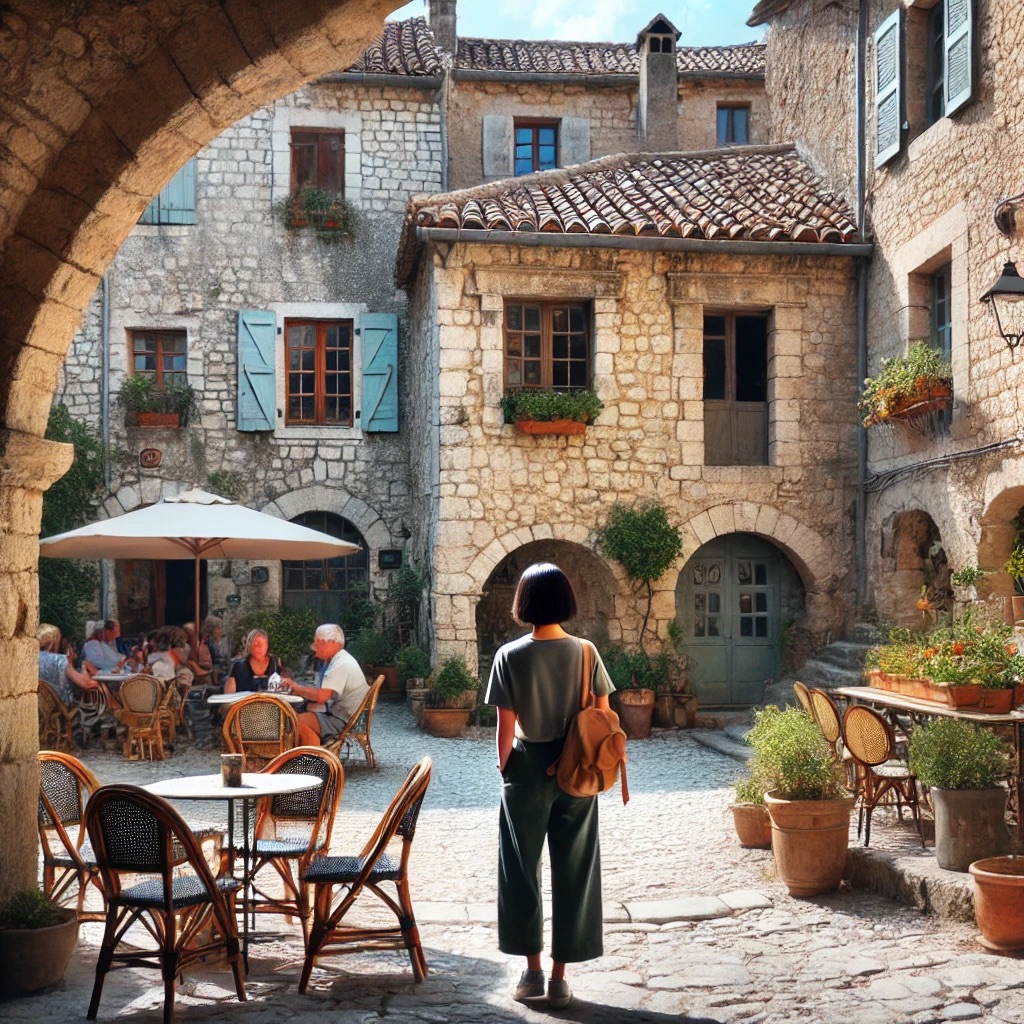ChatGPT:
Segesta is an ancient city located in northwestern Sicily, Italy, renowned for its well-preserved Greek architecture. Founded by the Elymians, an indigenous people of Sicily, it was heavily influenced by Greek culture. The most iconic structure in Segesta is its Doric temple, built in the 5th century BCE. Although unfinished, the temple stands majestically on a hill, offering stunning views of the surrounding countryside. Another significant site is the ancient theater, set into the hillside, with panoramic vistas toward the sea.
Segesta’s strategic location made it a prominent city in antiquity, and it played a crucial role in regional conflicts, including the wars between Athens, Carthage, and Syracuse. Today, Segesta is a tranquil archaeological site, attracting visitors for its historical significance and serene, scenic landscape.
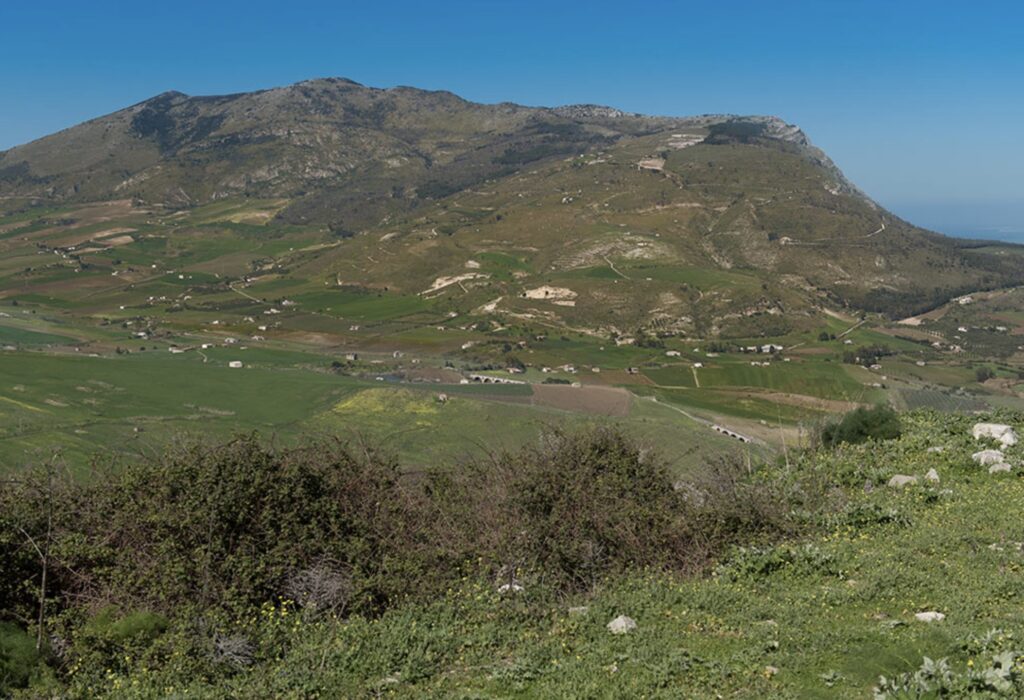
Origin of Segesta:
Segesta was founded by the Elymians, an ancient indigenous people of Sicily, whose origin remains somewhat mysterious. Some ancient sources, including the historian Thucydides, suggest that the Elymians were refugees from Troy, who settled in Sicily after the fall of their city. This mythological origin adds a layer of mystery to Segesta’s early history, though modern historians believe the Elymians developed independently on the island, influenced by interactions with both Phoenician and Greek settlers.
History and Development of Segesta:
- Early Period (Pre-6th century BCE):
Segesta emerged as a prominent Elymian city, strategically located between the powerful Greek and Phoenician colonies on the island. The Elymians, while not Greek themselves, adopted many Greek customs, architectural styles, and political structures, though they maintained their distinct identity. Segesta was an important cultural and political center during this time. - Relations with Greek Sicily (6th-5th century BCE):
During the 6th and 5th centuries BCE, Segesta had a complex relationship with the powerful Greek city of Selinunte, located to the south. Although sometimes at peace, these two cities often found themselves at odds, competing over territory and influence in western Sicily. Segesta, in its bid for survival, sought alliances with external powers, including Athens and Carthage, to protect itself from its Greek rivals. Around 416 BCE, Segesta famously requested Athenian help in its conflict with Selinunte. This led to the disastrous Sicilian Expedition by Athens during the Peloponnesian War, which ended in a catastrophic defeat for Athens. Nonetheless, Segesta continued to endure and thrive, thanks to its strategic alliances with powers like Carthage. - Carthaginian and Roman Period (4th century BCE-3rd century BCE):
After the Sicilian Expedition, Segesta came under the influence of Carthage, particularly during the 4th century BCE. This relationship ensured its protection from Selinunte, which was eventually destroyed by the Carthaginians in 409 BCE. In the 3rd century BCE, during the First Punic War, Segesta shifted its allegiance to Rome, which was expanding its influence into Sicily. The city was spared from destruction by the Romans due to its supposed Trojan origins, which connected them to the mythological roots of Rome. Segesta’s favor with Rome allowed it to retain a degree of autonomy and importance as a Roman ally. - Roman Empire and Decline (2nd century BCE-1st century CE):
Under Roman rule, Segesta prospered for a time, particularly as a trade and agricultural center. However, over the centuries, the city began to decline, especially as the Roman Empire shifted its focus toward other parts of Sicily and the Mediterranean. By the end of the Roman period, Segesta was largely abandoned, with only remnants of its former glory left behind.
Architectural Development:
Segesta is best known for its architectural achievements, especially its Doric temple, constructed in the 5th century BCE. This temple, while unfinished, reflects the influence of Greek architecture despite the Elymians’ non-Greek origins. The temple’s incomplete roof and missing cella (inner chamber) suggest that work was abruptly halted, perhaps due to political or financial difficulties. Nevertheless, it stands as one of the most remarkably preserved ancient temples in Sicily.
The Greek-style theater, built in the late 3rd century BCE, is another notable structure, set on the slopes of Mount Barbaro. It overlooks the sea and the surrounding countryside, a typical feature of Greek theaters designed to integrate natural beauty into their architecture.
Segesta’s Legacy:
Today, Segesta’s ruins, particularly the temple and theater, remain significant archaeological sites. They provide insight into the cultural blending of the ancient Mediterranean world, where Greek, Elymian, and later Roman influences merged. Segesta’s history is a testament to the city’s resilience amid conflicts between the great powers of its time. The site continues to attract scholars and visitors, who are drawn to its historical significance and the beauty of its landscape.
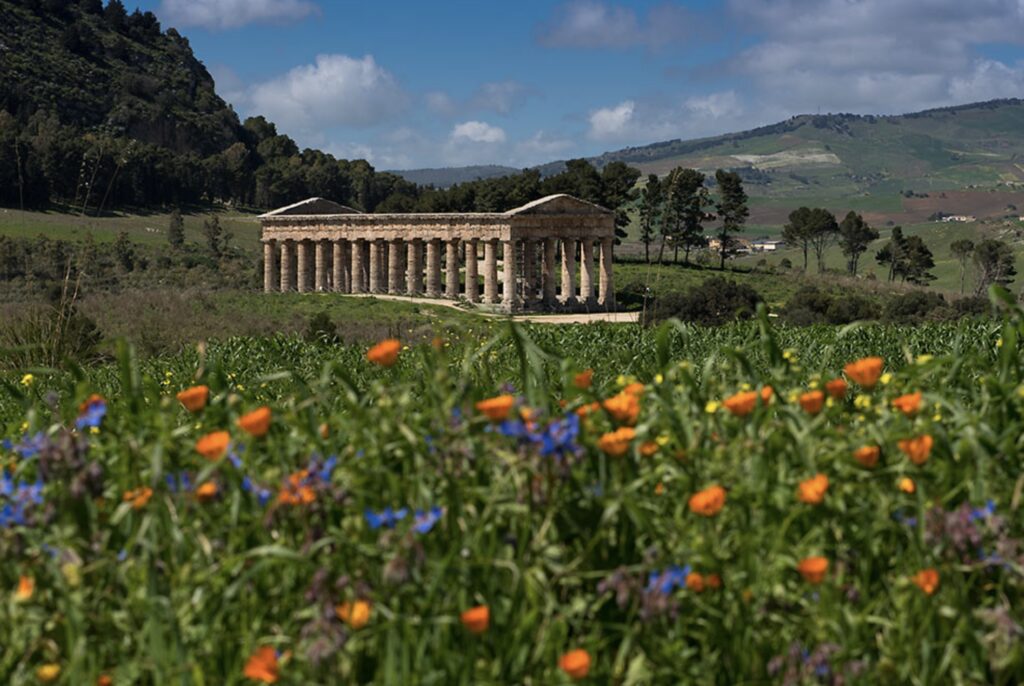
Segesta is home to several notable historical monuments, primarily from the Elymian and Greek periods. The key monuments include:
- The Doric Temple:
Constructed in the 5th century BCE, this is Segesta’s most iconic structure. Though unfinished, the temple features 36 Doric columns and stands remarkably well-preserved. It lacks a roof and an inner cella, but its grandeur and location make it one of the finest examples of Greek architecture in Sicily.
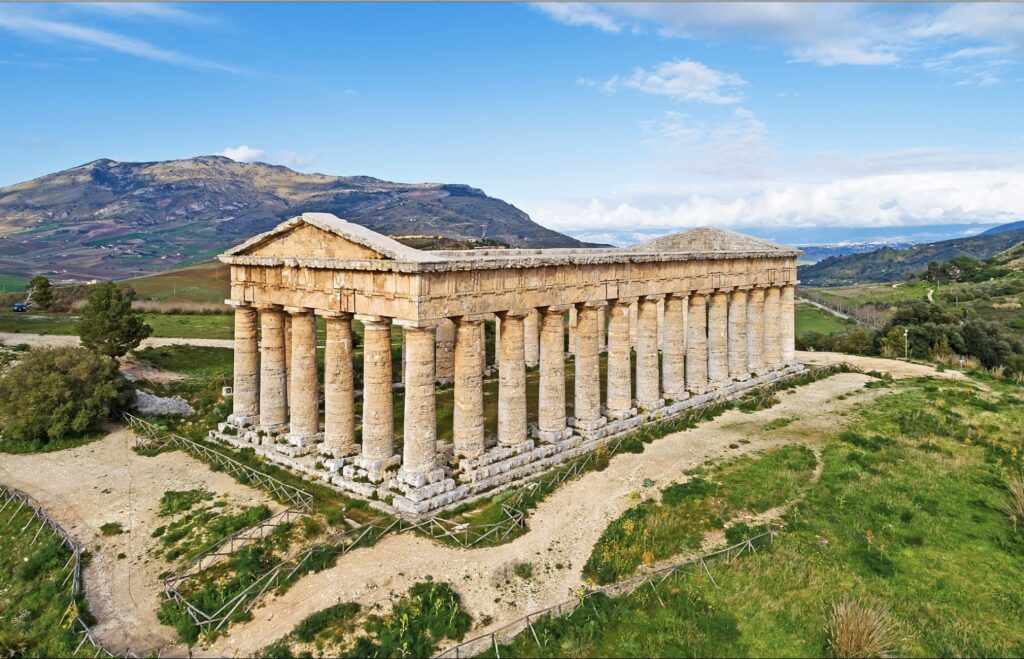
- The Ancient Theater:
Built in the late 3rd century BCE, this Greek-style theater is located on the slopes of Mount Barbaro. It could seat around 3,000 spectators and offers spectacular views of the surrounding countryside and the Gulf of Castellammare. The theater was likely used for both performances and public gatherings.
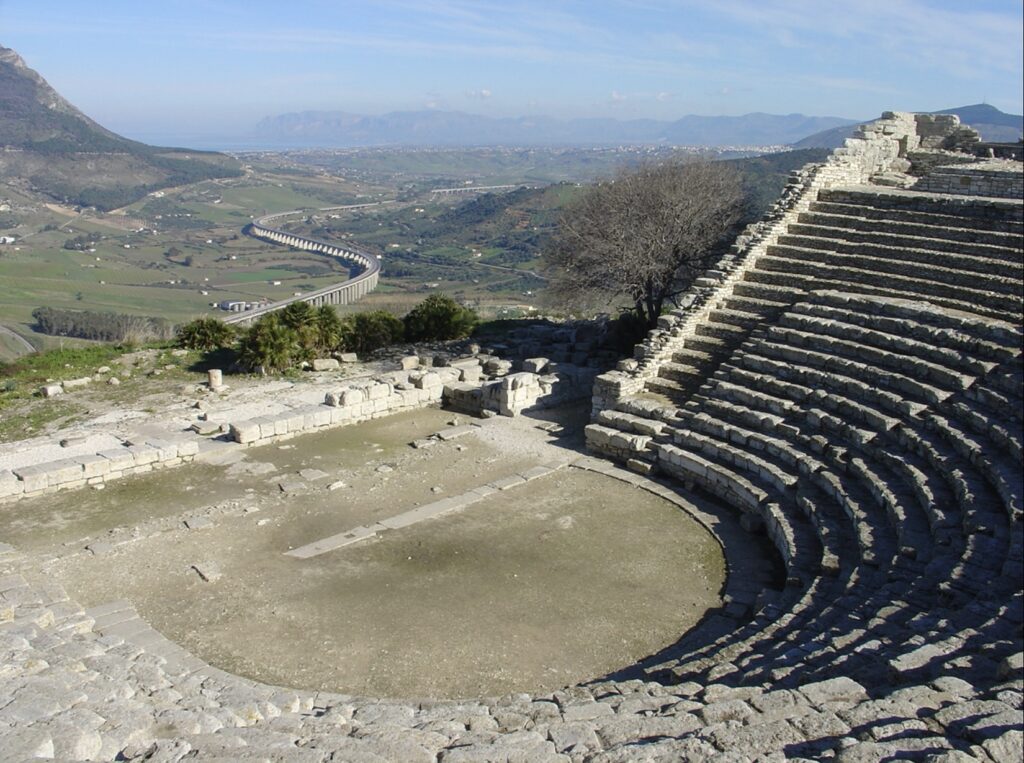
- The Agora:
This was the central marketplace and social hub of the city, though much of its structure remains less well-preserved compared to the temple and theater. Excavations have revealed remnants of the city’s public and administrative life.
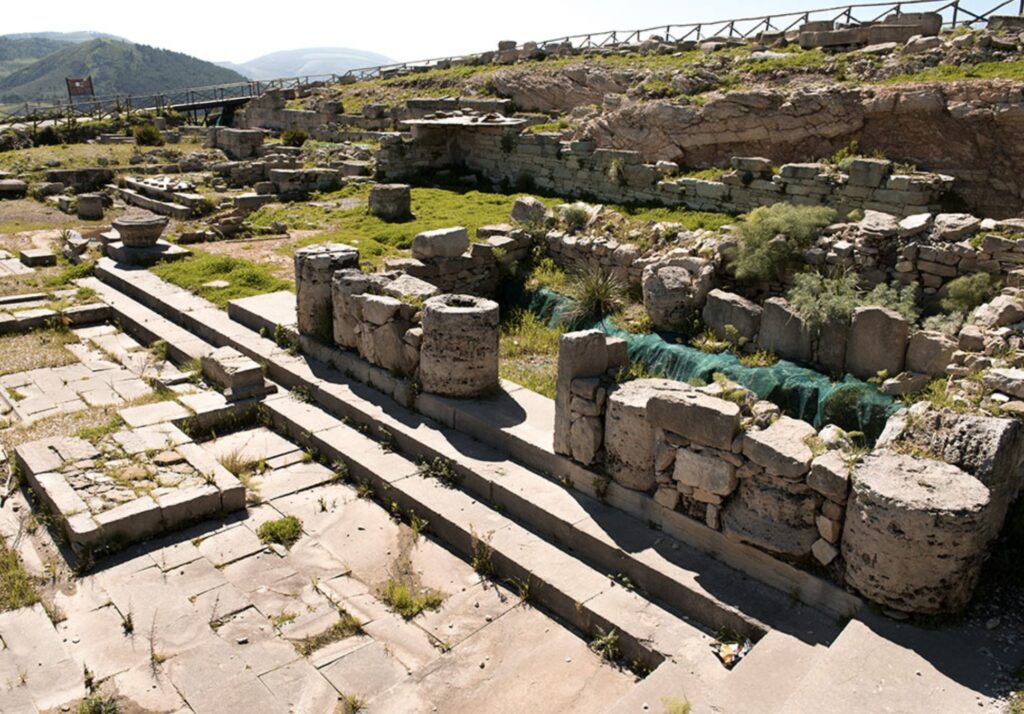
- The City Walls:
Segesta was fortified by an impressive system of walls. Portions of these ancient walls still exist, particularly on Mount Barbaro, providing insight into the city’s defensive structures. - The Sanctuary:
A religious sanctuary near the ancient city has been identified through archaeological findings. While less prominent than the temple, it likely played a role in local religious ceremonies and rituals. - The Acropolis:
Located on the summit of Mount Barbaro, the acropolis was the political and religious heart of Segesta. While much of it remains in ruins, excavations have revealed a complex of structures and public buildings.
These monuments reflect the city’s cultural blending of Elymian, Greek, and Roman influences, and they continue to draw interest due to their historical and architectural significance.
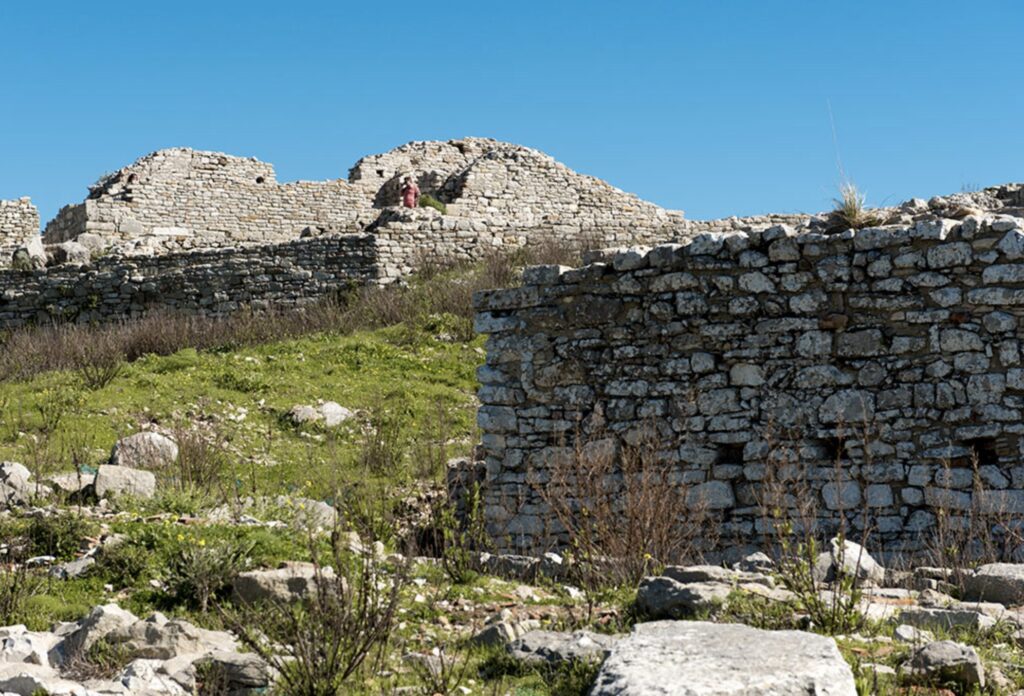
Several interesting sites are located near Segesta, offering visitors a chance to explore more of Sicily’s rich history and natural beauty:
1. Castellammare del Golfo:About 20 km from Segesta, this picturesque seaside town offers stunning views of the Gulf of Castellammare, a charming harbor, and a historic Norman-Arab castle. It’s a great place to enjoy the Sicilian coast, local seafood, and the laid-back atmosphere.
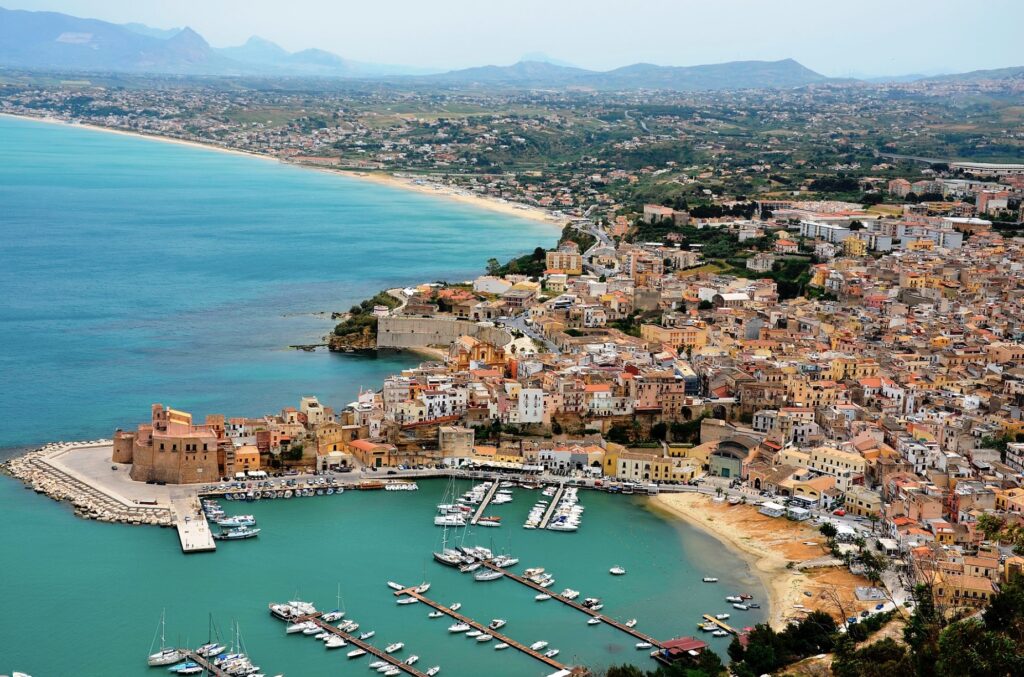
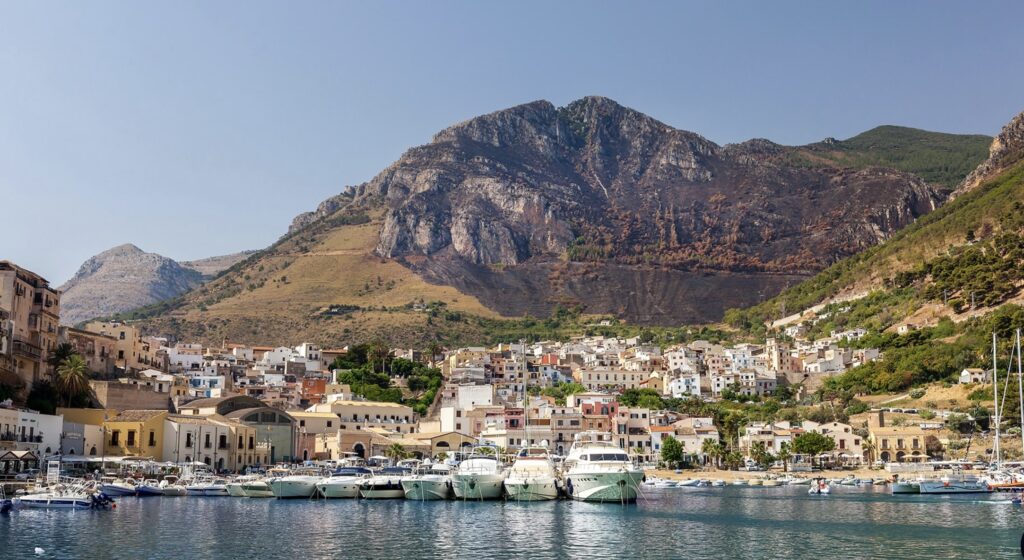
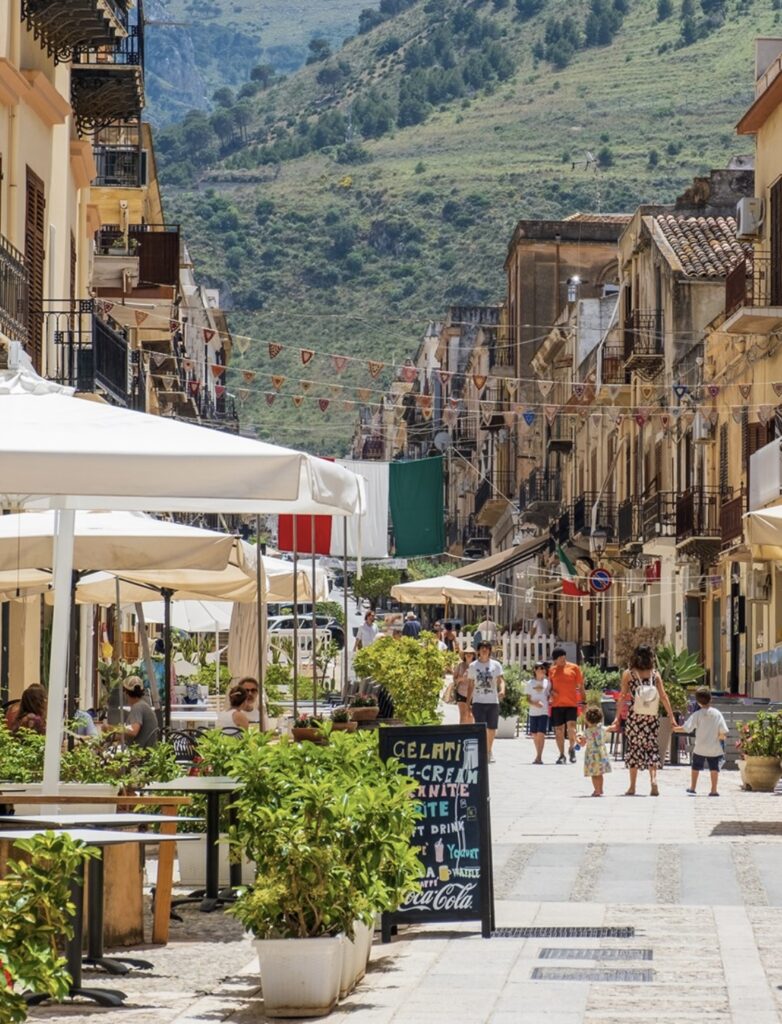
2. Scopello:
A small, quaint village known for its ancient tuna fishing estate (Tonnara di Scopello) and its stunning coastline, including the famous Faraglioni di Scopello, sea stacks that rise dramatically from the water. It’s also a gateway to the Zingaro Nature Reserve, known for its beautiful hiking trails, secluded beaches, and crystal-clear waters.
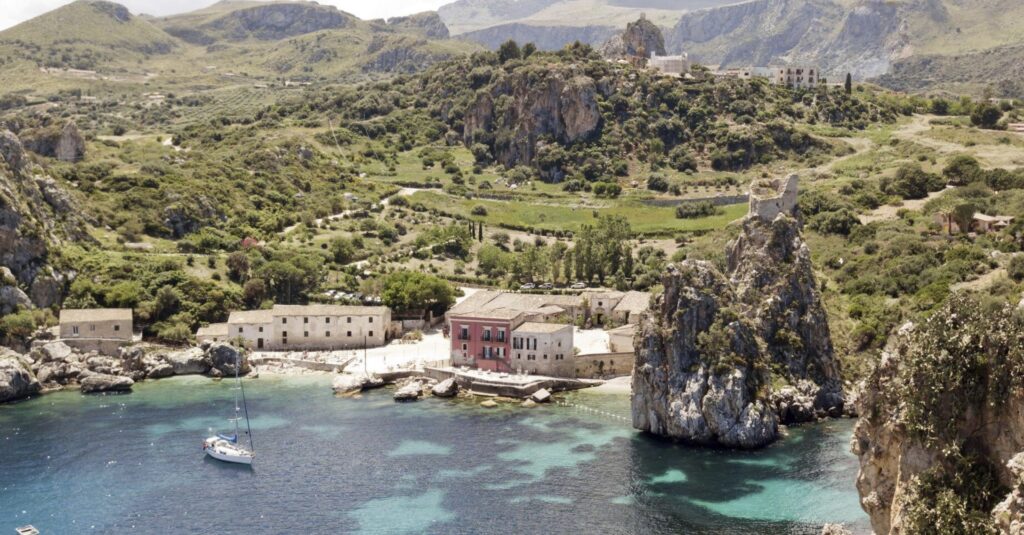
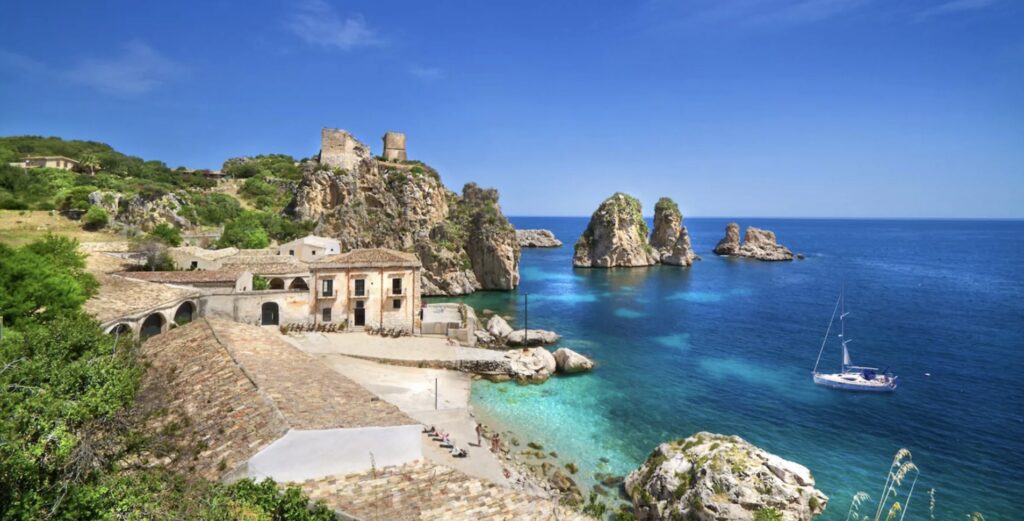
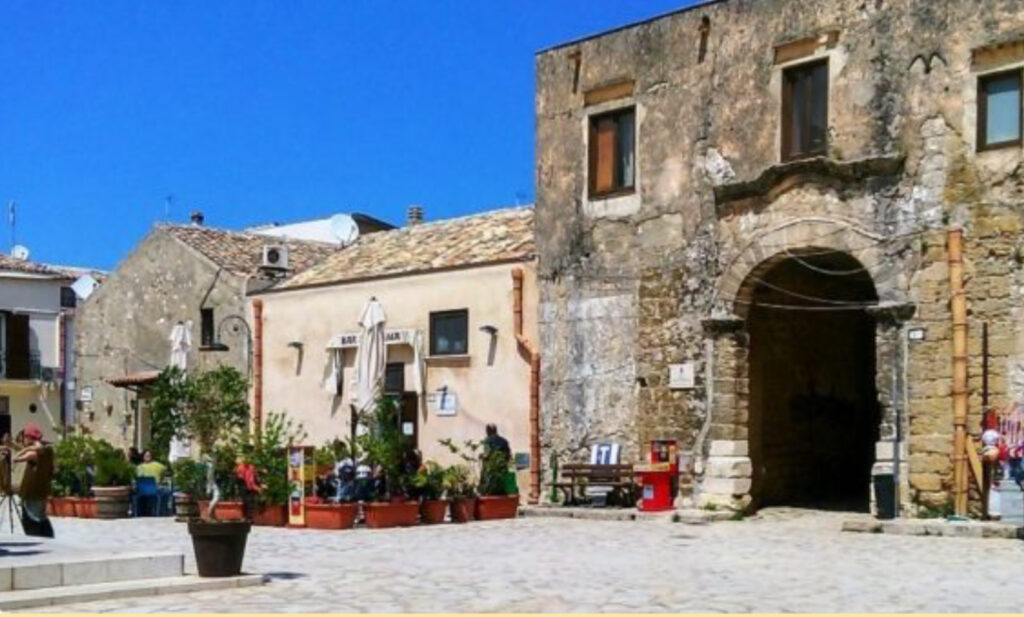
3. Zingaro Nature Reserve:
Located around 30 km from Segesta, this protected natural area is perfect for hiking, birdwatching, and swimming. The reserve features a rugged coastline with several coves and beaches, as well as a diverse array of plant and animal life.

Here’s a suggested one-day itinerary for visiting both Segesta and Castellammare del Golfo, combining history, stunning views, and local flavors.
Morning: Explore Segesta
9:00 AM – Arrive at Segesta Archaeological Park
- Start your day by visiting the Doric Temple. Spend time walking around the temple, admiring its striking architecture and the surrounding countryside.
- Afterward, head up to the Ancient Theater. The hike up takes about 15-20 minutes, but the views from the theater are breathtaking, overlooking the rolling hills and coastline in the distance. It’s a perfect spot for some great photos.
- Explore the remains of the Acropolis and City Walls, which offer further insight into the ancient city’s defensive structure and public spaces.
11:00 AM – Coffee Break at the Park Café
- Before leaving, take a break at the café near the entrance to relax with a cappuccino or espresso and enjoy the peaceful atmosphere of the area.
11:30 AM – Drive to Castellammare del Golfo
- It’s a short, scenic 25-minute drive (about 20 km) from Segesta to Castellammare del Golfo.
Midday: Discover Castellammare del Golfo
12:00 PM – Stroll Around Castellammare del Golfo
- Start by exploring the historic center and Castello Arabo-Normanno, which overlooks the picturesque harbor. You can learn about the castle’s history, from its Arab origins to its Norman and later transformations.
- Wander around the town’s charming streets, visit local shops, and take in the views of the port, where fishing boats bob gently in the water.
1:00 PM – Lunch at a Seaside Restaurant
- Enjoy a seafood lunch at one of the harbor-side restaurants. Try local specialties like pasta con le sarde (pasta with sardines), couscous di pesce, or freshly caught fish. Recommended places include Ristorante La Cambusa or Ristorante Egesta Mare, both offering beautiful views of the sea.
Afternoon: Scenic Drive and Relaxation
2:30 PM – Visit Scopello
- Take a short drive (about 15 minutes) to Scopello, a small village known for its ancient Tonnara di Scopello and the nearby Faraglioni (sea stacks). Spend some time wandering around the charming village square and enjoying the coastal views.
- If you’re up for a bit more adventure, you can take a quick swim in one of the scenic coves around the area.
4:00 PM – Relax at Zingaro Nature Reserve
- From Scopello, you’re just a few minutes away from the Zingaro Nature Reserve. You can take a short hike to one of the nearby coves or just relax by the clear waters. A brief stop at the reserve offers stunning natural beauty and a peaceful break from sightseeing.
Late Afternoon: Return to Castellammare del Golfo
5:30 PM – Gelato and Stroll Along the Marina
- Head back to Castellammare del Golfo and enjoy a gelato from a local gelateria as you stroll along the marina. Take in the views of the sea and relax in the late afternoon sun. The town’s quiet charm makes this an ideal way to unwind before your day ends.
6:30 PM – Drive Back or Stay for Dinner
- If you have time, you can choose to have an early dinner at one of the town’s restaurants, or if you’re heading back to your base, you can make your way back after the relaxed evening stroll.
This itinerary balances history, scenic drives, and relaxation, giving you a well-rounded experience of Segesta and Castellammare del Golfo in one day.
